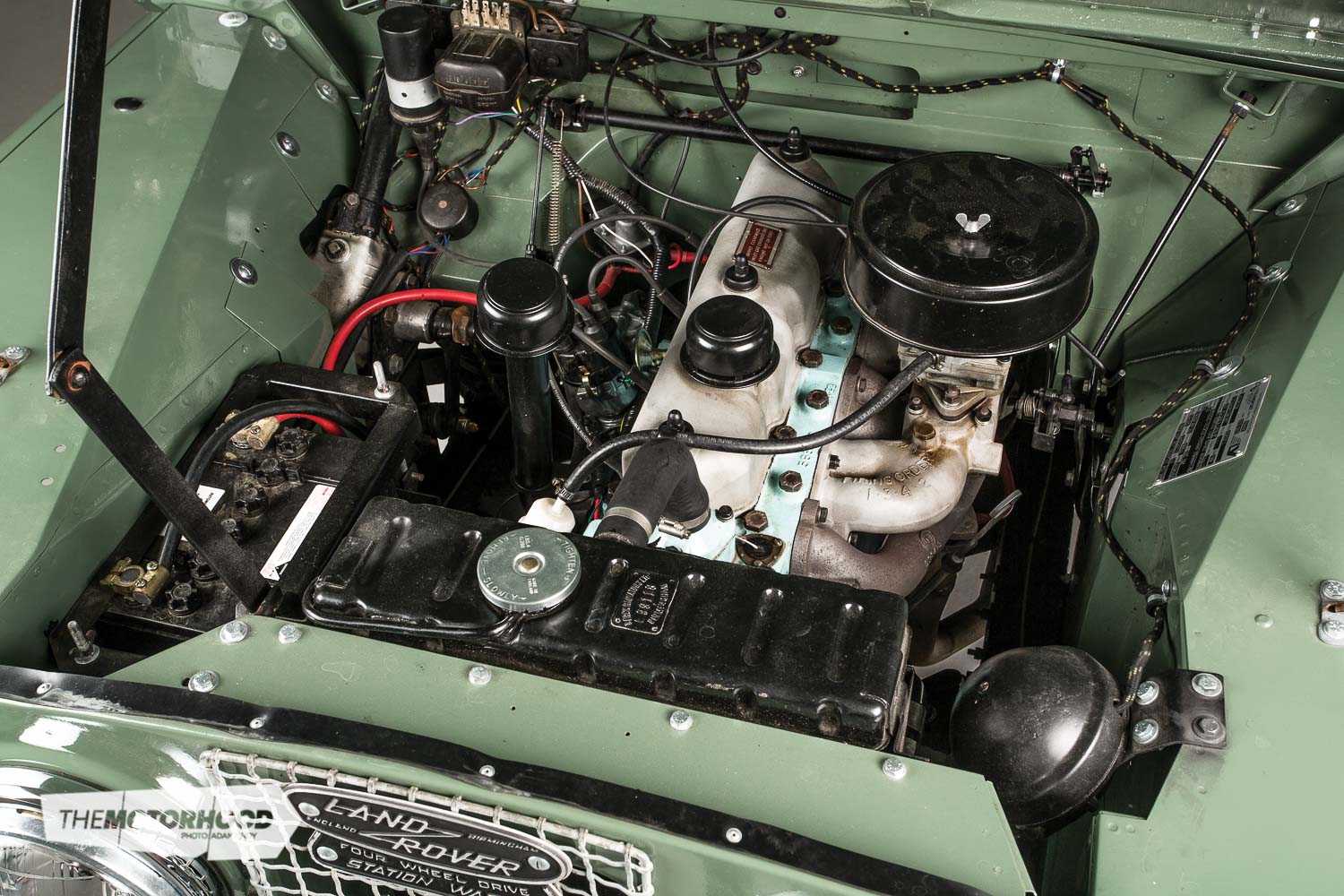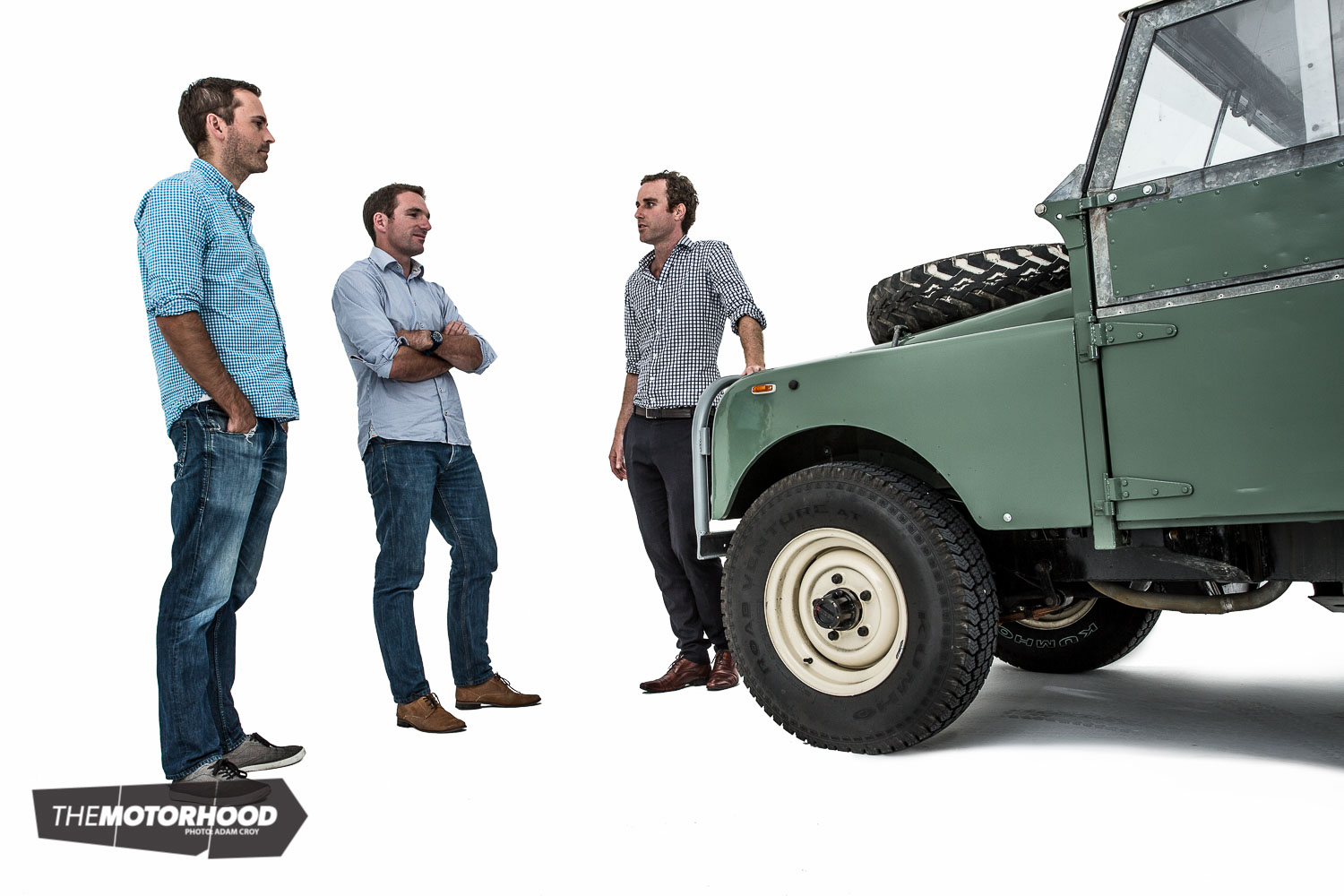
data-animation-override>
“You may be wondering why an old Series 1 Land Rover would be presented to four Kiwi mates as a Valentine’s Day gift. It’s a great yarn full of adventure, sorrow and delight, so sit back and enjoy the ride”

Imagine, if you will, four Otago University mates pooling their student loans 15 years ago to purchase a Land Rover, quickly christened ‘The Landy’. The trusty vehicle helped the four Scarfies create a whole series of lifelong memories as they shared countless skiing, fishing, mountain biking, rowing and tramping adventures throughout the South Island. The Landy quickly became very much a beloved part of their everyday lives.
Fast forward to 2014, when the heartbreaking decision had to be made to part with the Landy and, reluctantly, a listing was placed online offering the beaten and broken 1957 Series I Land Rover for sale. The advertisement included images that depicted the part the Landy had played in their many adventures, and anyone reading the advert would have been aware of the sorrow these mates felt at parting with their beloved truck.
Those mates — Will, Jeremy, Anthony, and James — all thought they were closing a chapter with the Land Rover’s sale, but they were wrong, because fate was about to intervene.

A cunning plan
The marketing manager for Land Rover New Zealand, James McKee, receives a daily email from local online trading sites highlighting the range of Land Rovers and Jaguars currently on the market. In October 2014, James spotted a listing and recognized a great yarn behind the sale — and one told very well and really sincerely. He also received several emails from colleagues and friends outside the industry saying things like — “Did you see this?” and “Have a look at this!” or “Check this one out!”
James wasted no time in contacting Land Rover New Zealand’s communications agency, Y&R NZ, and public relations specialist Campbell & Co, to convey the contents of that unusual listing. James was also drawn to the fact that the vehicle being sold was a 1957 Series 1 Land Rover, a classic mud-plugger which most Kiwis will have had some experience with at some point or another during their lives.
A meeting was organized, and a cunning plan was hatched to return the Land Rover to its four owners, fully restored, so they could continue their adventures.
The teams decided to work together because it was such a great story, and they just wanted to do something, in James’ words, “Kinda cool.”
Vinny Sherry, Campbell & Co’s director, said, “We weren’t out there hunting for something to do — it just crossed us, so at that point we said, let’s buy it off them.” The next issue was how they could implement their plan successfully to buy and restore the Landy, and conjure up a suitable pretence for handing it back to the four mates — according to Vinny, “That’s where we came in and said — it’s their first love, isn’t this the best Valentine present they could have?”

Secret service
The process of buying the Land Rover involved a whole series of carefully-thought-out logistics to keep the true motive behind the purchase secret, and acquiring The Landy effectively became a covert, military-style operation.
A video production company was hired to film the entire project, and came up with a shrewd plan to send James McKee to buy The Landy in response to the online advertisement. Mind you as James is the same age as the four mates, all in their 30s, as New Zealand is such a small place, and especially given today’s prevalence of Linkedin and Facebook and other social media, there was a slight chance sending the marketing manager of Land Rover New Zealand to buy the old Land Rover would raise a few eyebrows, so secrecy was paramount.
It all happened a lot more quickly than it sounds, and the purchase went as planned. The four mates just figured James was a guy who wanted a Landy, and it wasn’t long before it was loaded onto a trailer. James carefully covered his tracks by saying, “I don’t actually want everyone else or Land Rover knowing that I’m doing this, because it’s going to be a project of mine and I don’t want every Tom, Dick and Harry sticking their nose in saying ‘oh you should do it like this or do it like that.’”
Of course, the entire buying transaction and subsequent loading of the Land Rover onto the trailer was secretly filmed via several GoPro cameras, including one positioned inside the tow truck.
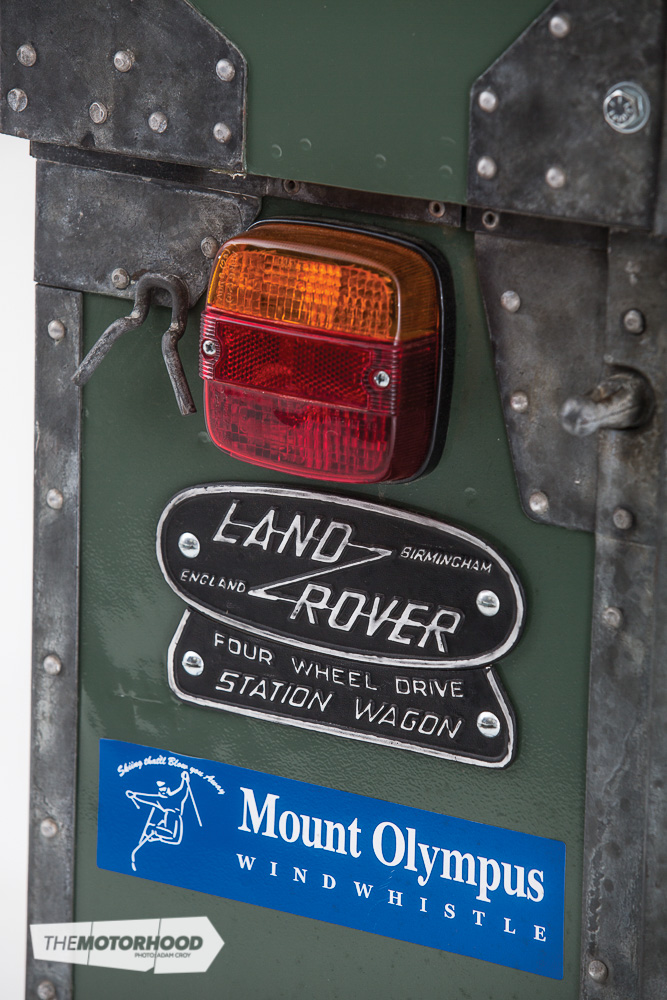
The restoration
The Landy was sent straight to Tony Katterns, at Custom Metal Shapers Ltd in South Auckland, for a full restoration. Custom Metal Shapers had been recommended to Land Rover for its expertise and extensive knowledge in restoring commercial and military-style vehicles.
Unfortunately, none of the four friends were in any way mechanically minded and, despite the fact that they had applied their skills, or lack of, to various restoration attempts, The Landy was in poor shape — to put it politely. But Tony didn’t yet know this during discussions about the restoration project with Land Rover NZ, when he learned that the deadline for completion would be just prior to Christmas 2014 — which gave the team at Custom Metal Shapers about three full months to complete the task. He felt confident he had everything in place to tackle the restoration, though he knew very little about The Landy other than what he could glean from a copy of the original online listing, and a couple of random photographs.
It wasn’t until it arrived at his South Auckland workshop in various pieces, much of them rusty, and without an engine or gearbox, that the enormity of the task ahead became apparent. Tony reckons, at best, it could have been used as a spare parts vehicle. In other words, there were possibly some parts that could have been rescued. The Land Rover’s firewall was completed rusted out, and an early Holden conversion at some point meant that the cross member had been removed and, in this case, had been roughly replaced with a piece of angle iron. Much of The Landy wore the unsightly scars of many previous and shoddy repairs, and the severely rusted chassis also required much attention. The engine bay was missing most of its components — including the radiator — and the car’s running gear was literally a ramshackle collection of various mismatched parts. The rear leaf springs had been ‘jacked up’ and flares fitted to the bodywork in order to fit sport-type wheels. In essence, Tony had a major restoration on his hands — and very little time to bring the project to completion.
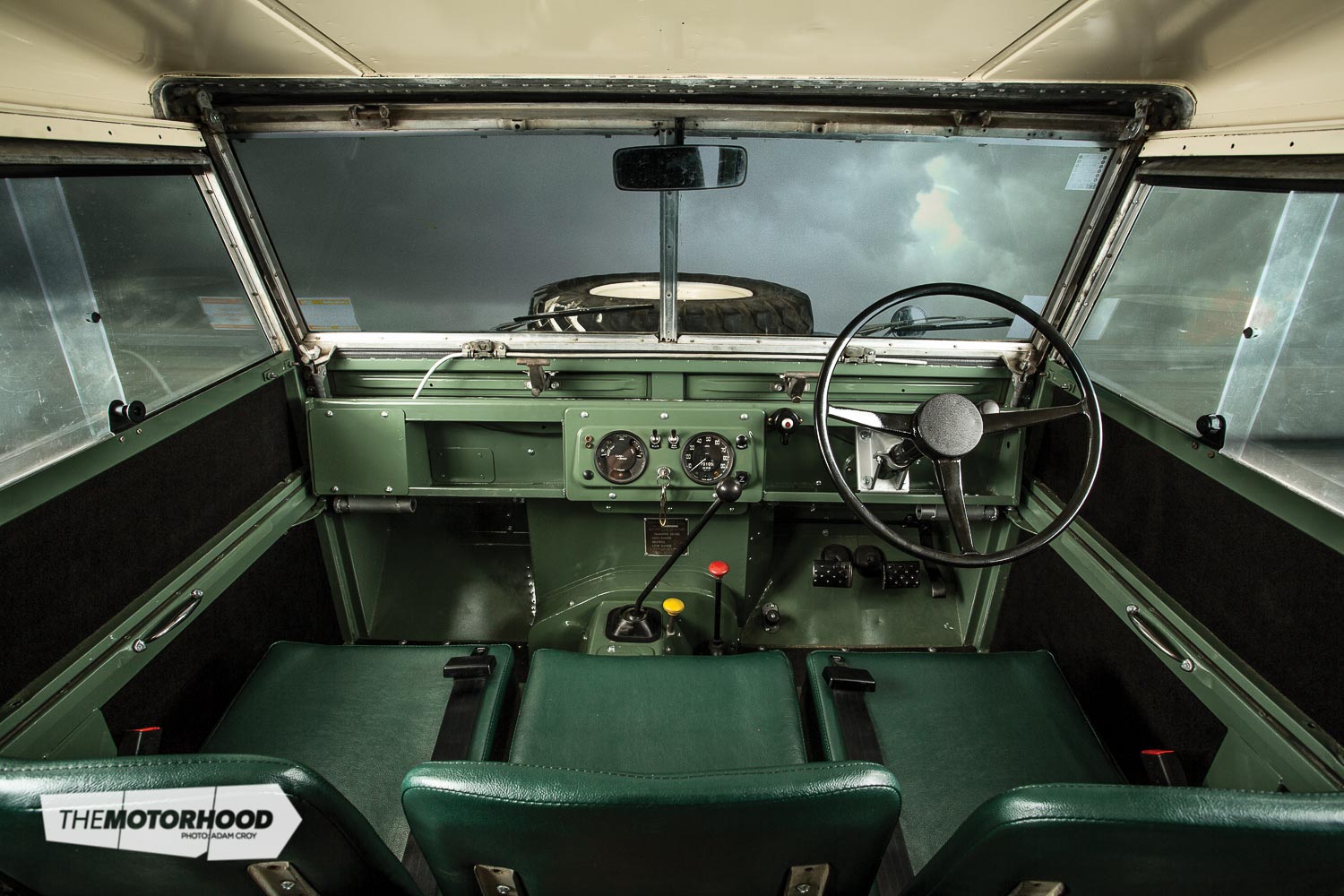
A major task
Tony treated the vehicle from the outset as if he owned it, and wasted no time in starting the restoration. Once everything was completely stripped apart, the first item on the agenda was to tackle the chassis — which meant setting it up on a chassis machine to check that it was true and square. Rusted areas were cut out and new, hand-fabricated pieces were welded into place. A new gearbox cross member was fitted and, after three or four weeks of intense and laborious work, a complete chassis emerged, returned to original specifications after being sandblasted clean and freshly painted.
Whilst the chassis was being rebuilt, Glenn — Tony’s mechanical and Land Rover guru — took care of all the drivetrain requirements. The second major component on a Land Rover that’s susceptible to rust, next to the chassis, is the firewall. Once it was acid dipped the extent of the repair work became evident, and about 80 per cent needed to be refabricated. Once the chassis and firewall were complete it was basically just a matter of bolting everything back together.

The differentials were stripped apart to check the crown wheel and pinions, and all wheel bearings were replaced. Everything that was associated with safety — including steering joints, complete braking system and the driveshafts — was replaced with brand-new components. A later-model Series 3 2.5-litre engine was purchased along with a full synchromesh gearbox, both sourced from Invercargill. The S3 engine was pulled apart and freshened up with new rings and valve guide seals and, due to time and budget constraints, a decision was made to leave the rest of the engine alone apart from reconditioning the carburettor and replacing engine gaskets. The gearbox was also disassembled and checked, and because the rust and body work had consumed a large portion of the restoration budget, Tony was careful not to spend money unnecessarily. Once the motor was cleaned and repainted, along with all the ancillary equipment, it was fitted onto the chassis along with the axles and leaf springs, complete with new suspension bushes throughout.
The brief from Land Rover NZ was to retain as much of the car’s original body work (including the vehicle’s ‘vintage’ dents) as possible. Various stress cracks were welded and repaired, and the front guards were extended back to factory height, as they’d been previously been cut short. Any structural corrosion was repaired, as were all the hinges and door locks, so they functioned correctly.
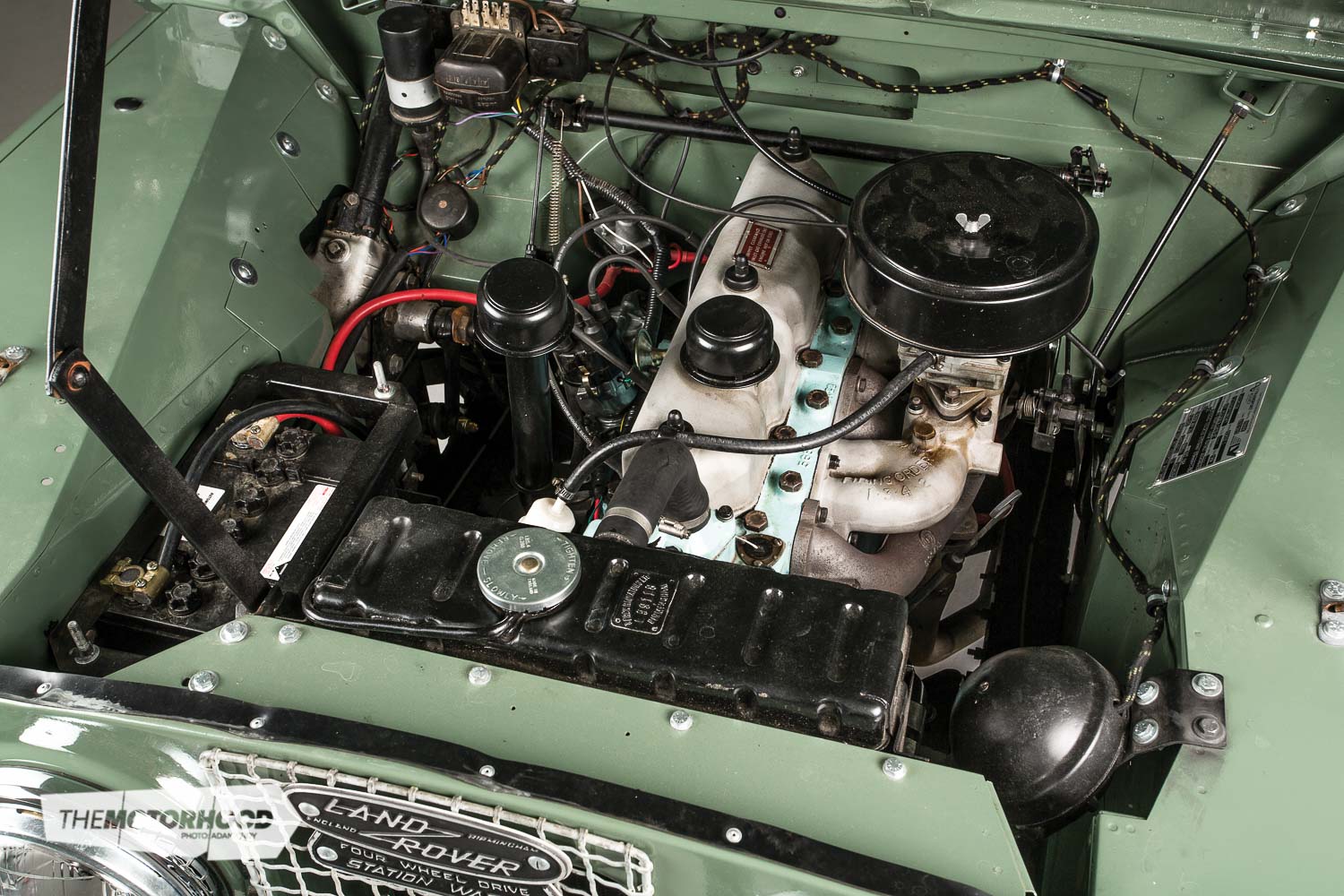
Once sanded back, the car’s body was repainted in the colour it had been when it was last on the road — light Land Rover Green. A brand-new wiring loom and new headlights were ordered from the UK and fitted, along with new window and door rubbers. The original glass was reinstalled.
Final assembly included the addition of such items as the exact aftermarket indicators and tail lights the owners had purchased and affixed many years previously, while wider Land Rover wheels and tyres were fitted.
Tony replaced the old Nissan bench seat with newly fabricated period-style seats, upholstered by Classic Upholstery in East Tamaki. The dash components were cleaned, checked and refitted along with a Series 3 steering wheel and column. A tool kit was installed, complete with the original crank starter, small items that weren’t in the original brief, but niceties that Tony thought would add a nice touch to the restoration.
Once The Landy was complete, the team wanted to road test it, and they took it back to the South Island. Adorned with its original stickers (a complete set had been painstakingly reproduced to make The Landy look just like it did when the four mates owned it), the car was taken on a brief whistle-stop tour of its spiritual home, Central Otago, to relive some of the original adventures that had been showcased in the online advertisement.
That trip took in some of the exact spots where those original old photographs had been taken — for example, there was an old photograph of The Landy parked outside the Cardrona pub, one on an old bridge and another of The Landy going through a river, and all these historic image were recreated.

The gift
In the meantime, another cunning plan was being hatched to give The Landy back to those four mates. An arrangement was made to contact Claire Radford, Will’s wife, who hadn’t a clue at that stage what was going on. Claire was told that Land Rover NZ had purchased the car and had it fully restored, and asked if she could help them put together a plan of how to give it back to her husband and his three friends. Claire was onboard from the get go, she also thought that the proposed Valentine’s Day gift idea was the perfect scenario, and she quickly pitched in to help. The plan was to organize a get-together at Claire and Will’s property in Kumeu, and invite the other three mates. Claire came up with a story about a friend of hers who was back from Canada, and was coming over for a BBQ.
Whilst Will was at work that day, The Landy was delivered to his house and hidden in the garage. GoPro cameras were placed all around to capture the handover ceremony. By this time, TV One current affairs programme Seven Sharp had jumped onto the story and was also on board, thanks to Claire’s friend Julie, who works for TV One — and a television crew, with cameras, was hidden away in the bushes at Will and Claire’s property.
Claire managed to coerce the four mates into sitting in front of the television, using the pretence of an interesting programme they should watch — but what they saw was something that looked remarkably like their old Landy, driving through the South Island. Y&R NZ had actually produced an advertisement specifically utilizing footage taken during that whistle-stop tour of the South Island. The four friends quickly realized that it was indeed their old Landy going through the South Island — and the short film ended with the voice-over saying “Happy Valentine’s Day lads, from Land Rover, Claire has the keys!”
Overcome with emotion and excitement, they all rushed out to the garage, opened the door, and there sat their beloved old Landy in pristine, restored condition. The team from Seven Sharp then suddenly jumped out from behind the bushes to interview the virtually speechless owners.
Since all the excitement of that day, the car’s four shareholders — Will, Jeremy, Anthony and James — have elected to keep The Landy and, for the moment, it resides at Will’s place.
Having been reunited with their mechanical mate, these four friends are already planning a road trip to be taken at some point in the near future — talk about recapturing your youth!
We’ll keep you posted on the boys’ ongoing adventures with The Landy.

Historic year
The Valentine’s Day project marks the beginning of a historic year for Land Rover, as it celebrates the final year of production of the current Land Rover Defender model — the direct descendent of the Series 1 Land Rover. With Land Rover Series I, II and III and Defenders tucked away in corners all over New Zealand, 2015 also marks the end of an era for thousands of Kiwis who have their own fond memories of adventures and journeys they’ve experienced in these famous Land Rover models.
1957 Land Rover Series 1
- Engine: Rover four cylinder — inline
- Capacity: 1997cc*
- Bore/stroke: 77.8/105mm
- Valves: Two per cylinder
- Comp ratio: 6.8:1
- Max power: 39kW at 4000rpm
- Max torque: 137Nm at 1500rpm
- Fuel system: Solex carburettor
- Transmission: Four-speed manual*
- Suspension F/R: Semi-elliptic leaf springs with rubber bushes controlled by telescopic hydraulic dampers
- Front axle: Spiral bevel differential. Drive transmitted through enclosed constant-velocity universal joints
- Rear axle: Spiral bevel pattern. Semi-floating axle shafts
- Steering: Burman worm and nut pattern
- Brakes F/R: Girling hydraulic drum brakes
Dimensions:
- Overall length: 3569mm
- Width: 1590mm
- Height: 1800mm
- Wheelbase: 2235mm
- Track F/R: 1270/1270mm
- Kerb weight: 1243kg
Performance:
- Max speed: 98kph (theoretical)
- Land Rover S1 Production: 1948–1958, 174,673 (all types)
* Featured vehicle is fitted with a later-model Series 3 2.5-litre engine and gearbox
This article was originally published in New Zealand Classic Car Issue No. 293. You can pick up a print copy or a digital copy of the magazine below:








